Following his release from prison in early June, Moses Hubert, 33, was in a difficult position: trying to find a job to support his four children while having a felony conviction on his record.
Earlier this month, he was pointed to T.O.U.C.H. Outreach, a violence prevention group that’s part of the Minneapolis violence interrupters program launched in 2021. T.O.U.C.H. Outreach, initially known as MinneapolUS, has in three years expanded and five separate groups now walking the city’s streets interacting with the community.
The T.O.U.C.H. Outreach team returned to their work on July 9 after renewing its contract, with Hubert among their ranks, to continue providing on-the-ground group violence prevention work through de-escalation tactics that treat violence as a public health concern.
“I get to come to work everyday, I get to put food on the table and take care of my kids and also get to be in the community and help out,” Hubert said. “I couldn’t ask for a better opportunity.”
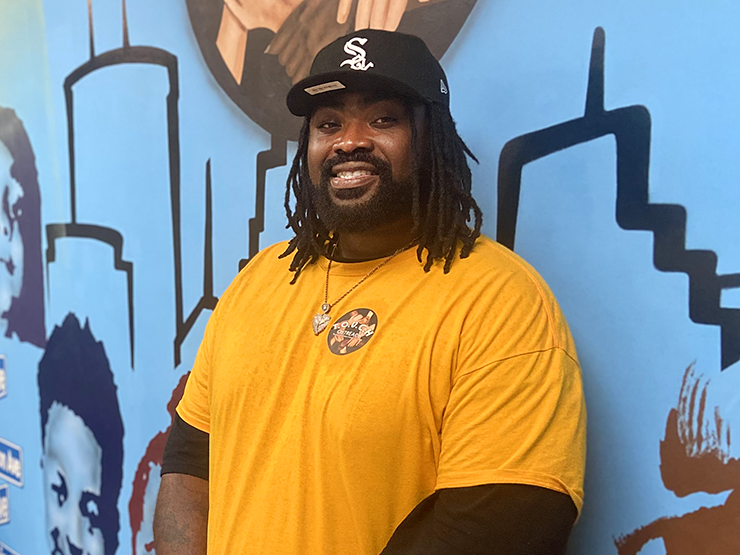
On the ground, in the community
The T.O.U.C.H. Outreach team, made up of 25 to 30 unarmed members, works from 3 p.m. to 11 p.m. Wednesday through Sunday – an upgrade from a previous schedule of six days a week for only a few hours each day. Saaundre Burns, 42, team lead for T.O.U.C.H. Outreach, said at the start of each shift his group splits into two smaller teams: one that covers the bulk of Lake Street in South Minneapolis from Lyndale Avenue to the light rail station on Hiawatha, while the other heads to Nicollet Mall downtown.
Related | In first full year of 24/7 service, Minneapolis behavioral crisis team responds to more than 10,000 calls
Burns said the work they do each night they’re out can vary significantly, and it can include administering NarCan to someone who is overdosing or buying something to eat for someone who is hungry, among many other things. But, he said, the bulk of what they do and what they’re trained to do is de-escalate situations that can turn into violence, and that takes instant relationship building.
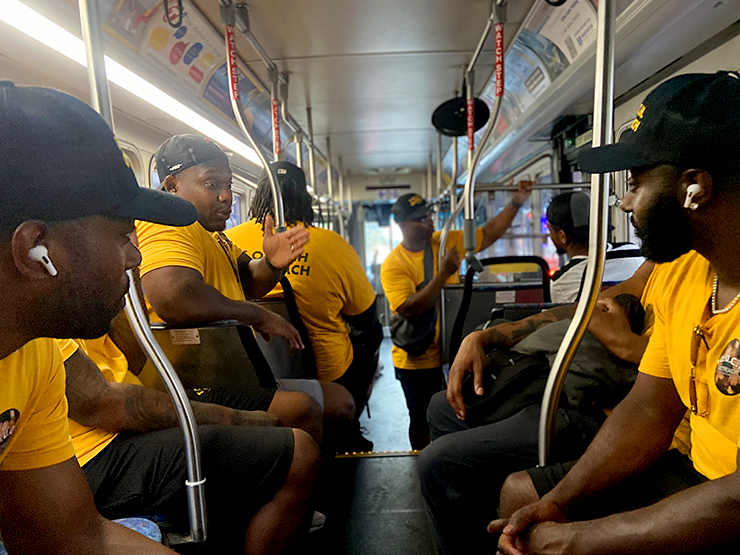
“You really can’t tell a grown man or woman what to do, so we just try to influence them to choose a better choice before they make the wrong choice,” he said. “Some of them are receptive to it but a lot of them aren’t, so we get a lot of knuckleheads but we step back and let them know that we care for them. Sometimes we deter them and sometimes the violence still ensues, but for the most part we save a lot of lives out here.”
Donald Sturgis, 53, who has been working as part of the T.O.U.C.H. Outreach team for more than three years, said he has family members that have gone through things like homelessness and addiction, which has prompted him to assist community members experiencing the same situations.
As someone who has spent time in prison, Sturgis said he also sees himself in young men in the street, and he uses his experiences to relate when trying to engage and de-escalate.
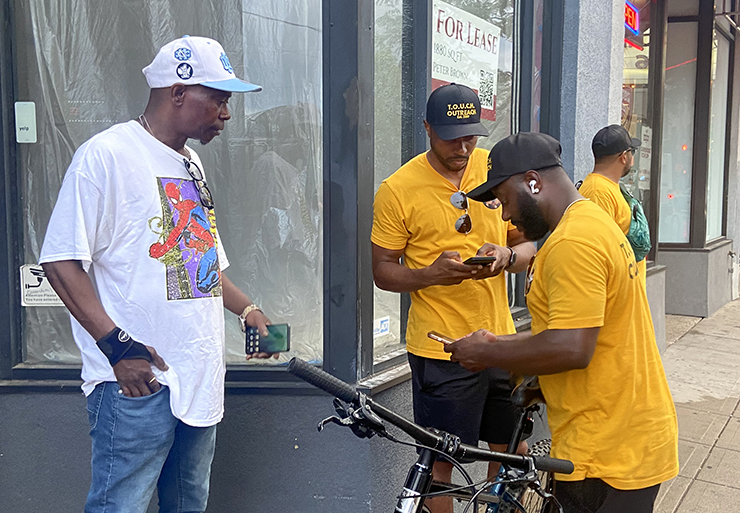
“I know the hole that lies ahead so I can tell them about it so they don’t have to fall in it,” he said. “I believe that some people make mistakes so that others don’t have to make them.”
Muhammad Abdul-Ahad, T.O.U.C.H. Outreach founder and executive director, echoed Sturgis, and said he was intentional about hiring individuals like Hubert and Sturgis to help with the outreach effort. In addition to providing employment opportunities to those who may have trouble finding work due to a past criminal record, he said their lived experience can be a powerful asset in their community outreach work.
“The testimony that they’re able to share with some of these young individuals that are out on the street can help impact their lives and help them make some of the best decisions for them,” Abdul-Ahad said. “Now these are some of the same individuals that are impacting other people’s lives in a positive way and giving them hope, showing them that there are opportunities out there.”
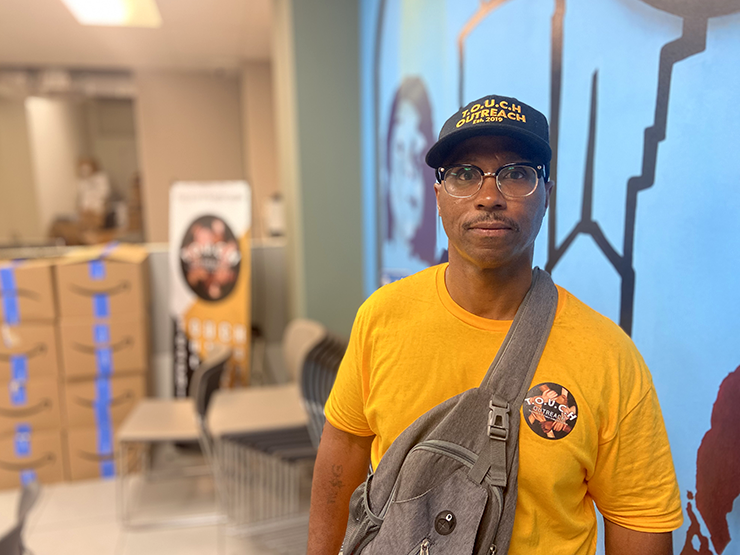
Future of the program
The violence interrupter groups are overseen by the city’s Department of Neighborhood Safety, one of the five departments housed within the Office of Community Safety, which also includes police, fire, 911 and emergency management. Like the behavioral crisis response teams that respond with unarmed mental health professionals, the interrupter program came about in the wake of the 2020 murder of George Floyd, a Black man, at the hands of a white Minneapolis police officer amid a widespread re-evaluation of public safety and desire for alternatives to law enforcement response.
The contracts between the groups and the city total $4.2 million, according to Office of Community Safety spokesman Brian Feintech. The city is planning to release a request for proposals early next year to invite more organizations to apply.
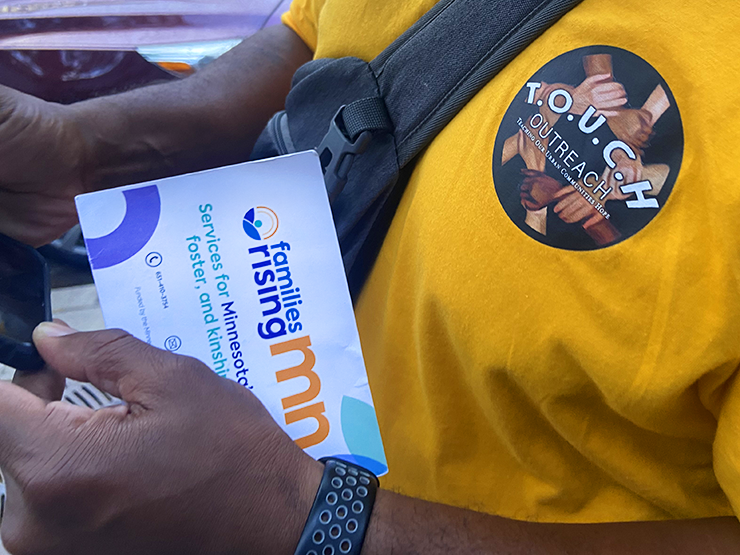
Each of the five groups currently contracted with the city are trained by Cure Violence Global, an organization that developed an approach to treat violence as a public health issue. The approach has been used by cities such as Charlotte and New York City to great effect, producing significant reductions in killings by 75% and 63%, respectively.
Neighborhood Safety Department (NSD) Director Luana Nelson-Brown said in a statement that the city of Minneapolis is now finalizing a three-year contract with Cure Violence Global to provide more training to the violence prevention groups currently under contract with the city and any newly funded organizations in 2025.
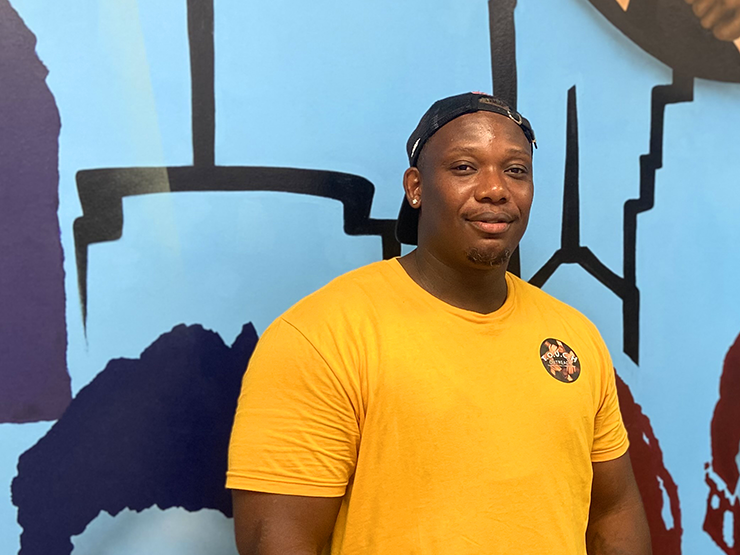
NSD is also preparing to hire staff to take the burden of collecting data off of the violence interrupter groups themselves and make data collection more consistent across the groups to facilitate analysis of the success and effectiveness of their work. In the meantime, Cure Violence Global will assist the city with data collection that includes incidents of community contact and mediations.
“The currently funded organizations have been diligent in doing this difficult work every day,” Nelson-Brown said in a statement. “They deserve to have that work acknowledged and to see their success in qualitative and quantitative form.”

Mohamed Ibrahim
Mohamed Ibrahim is MinnPost’s environment and public safety reporter. He can be reached at mibrahim@minnpost.com.





